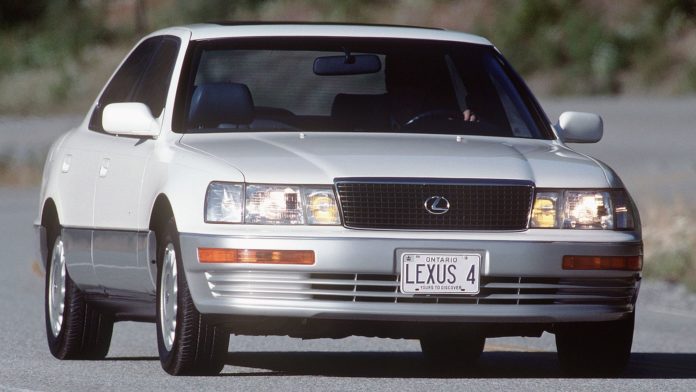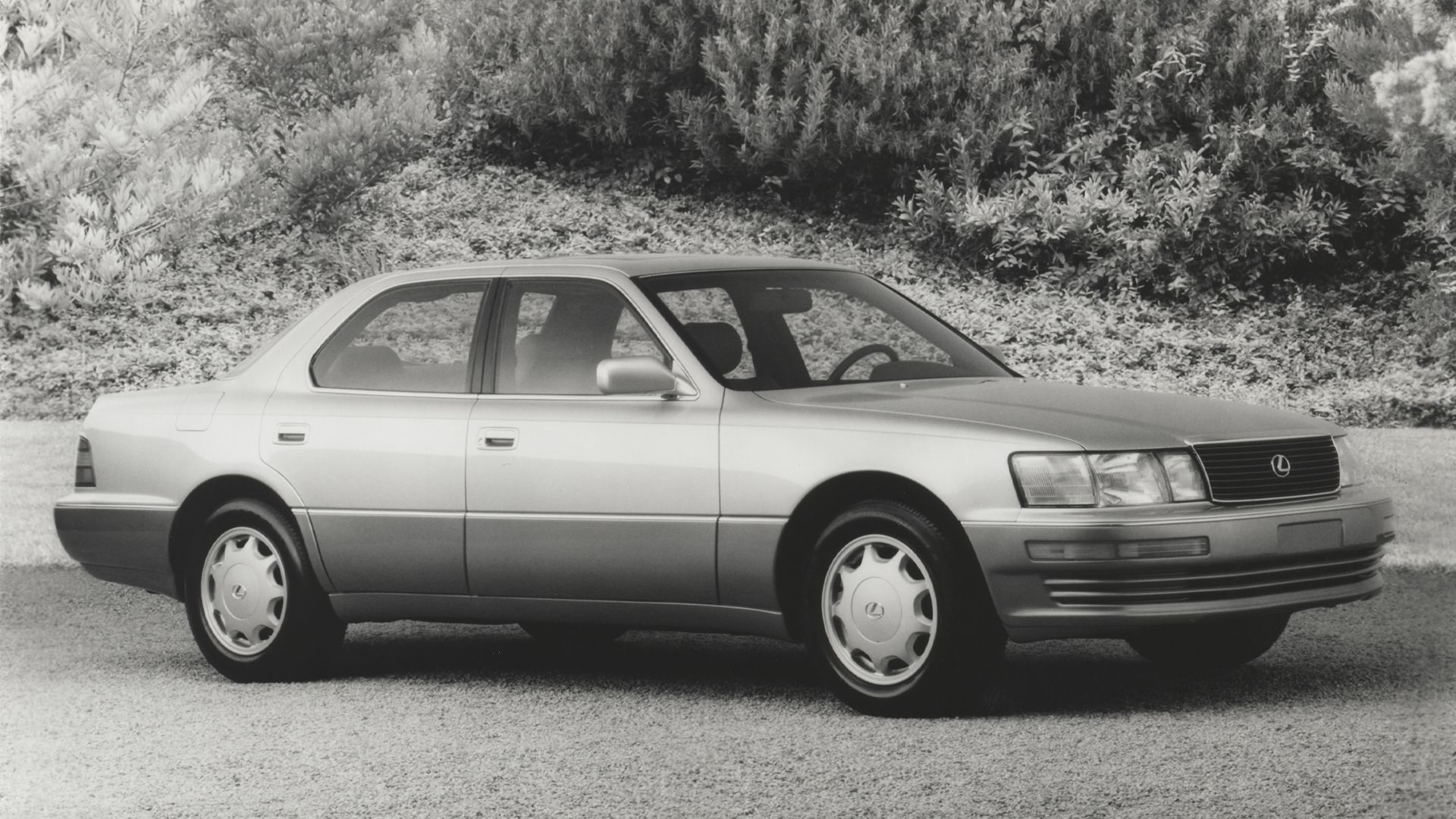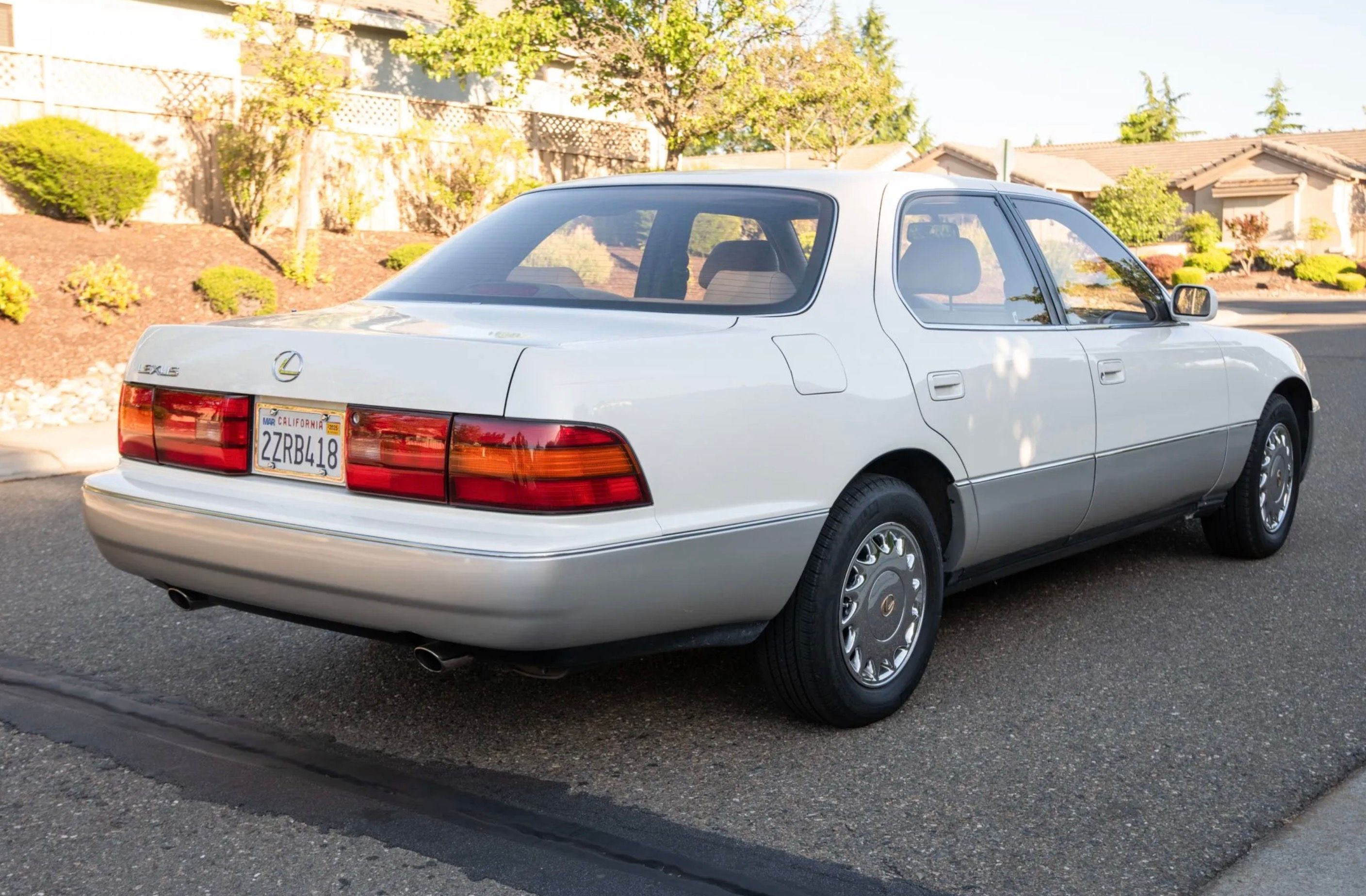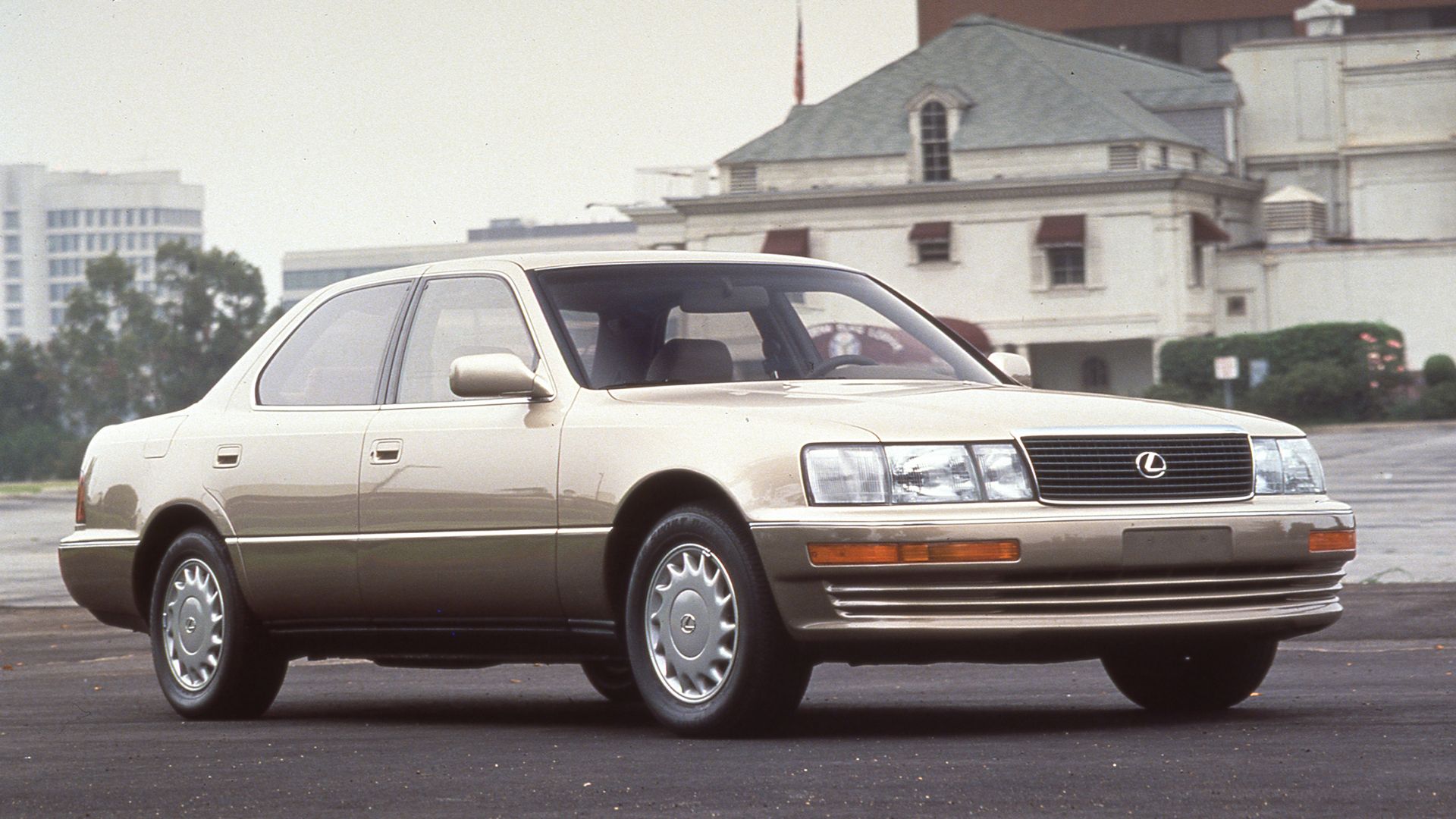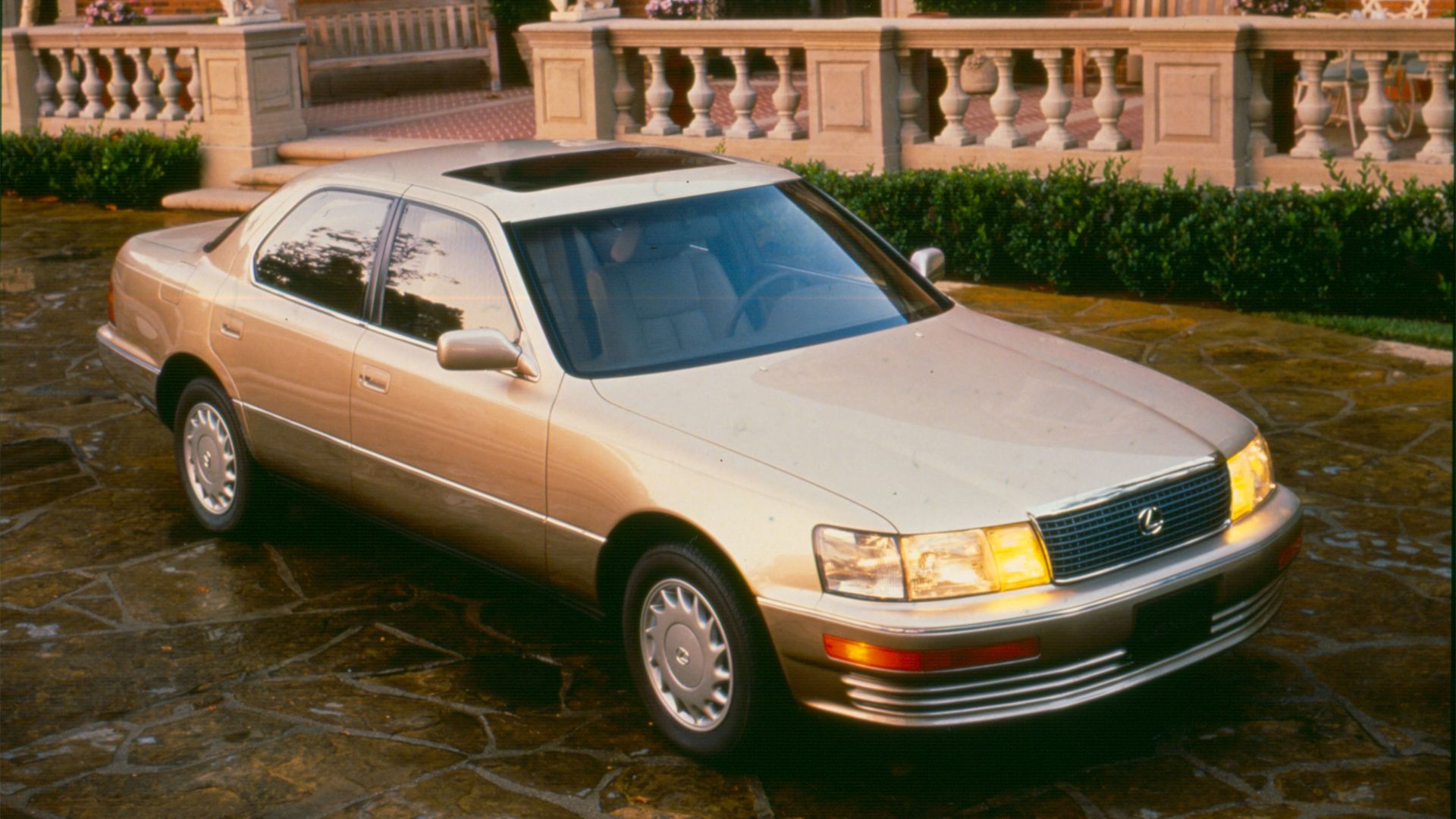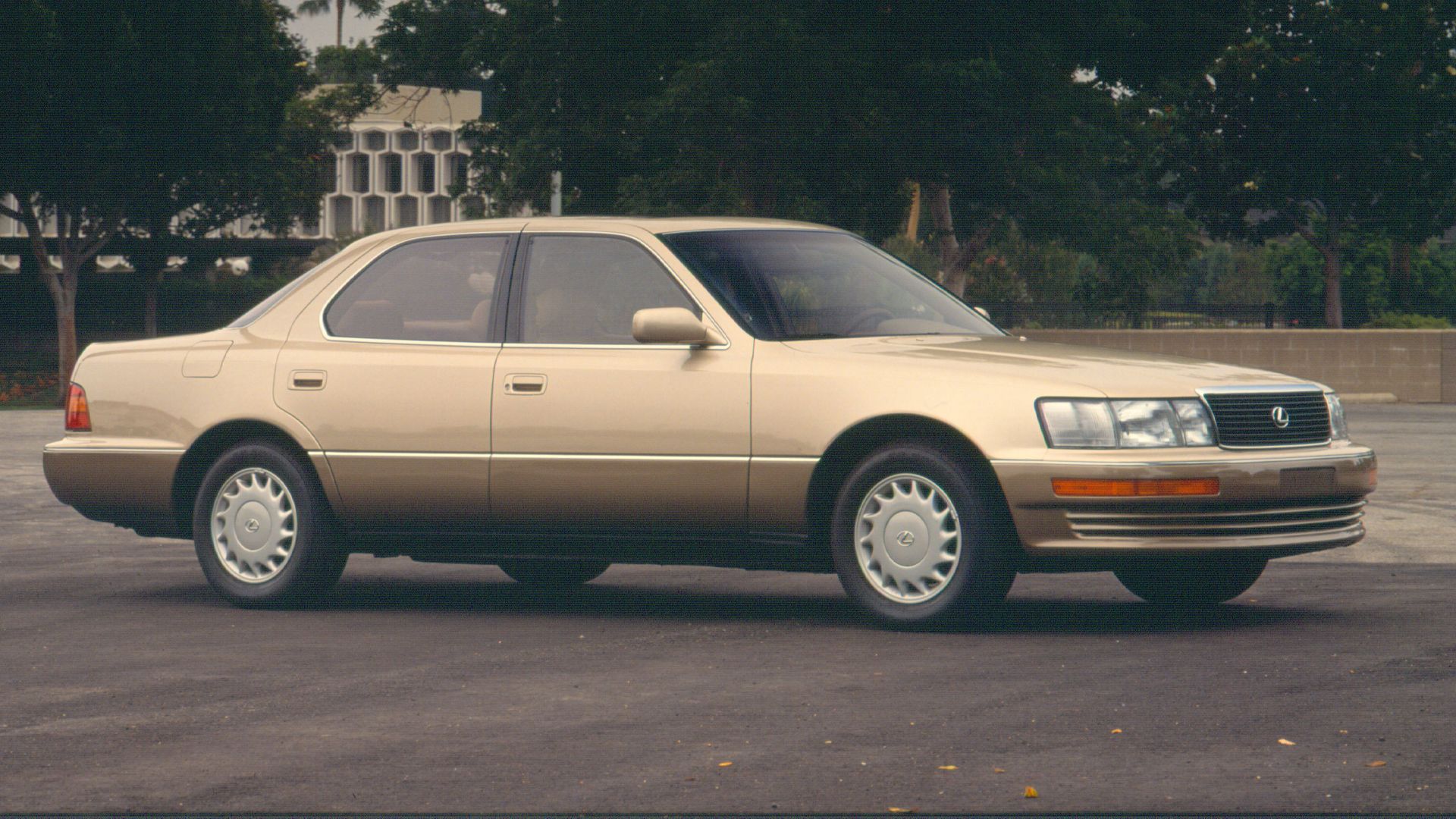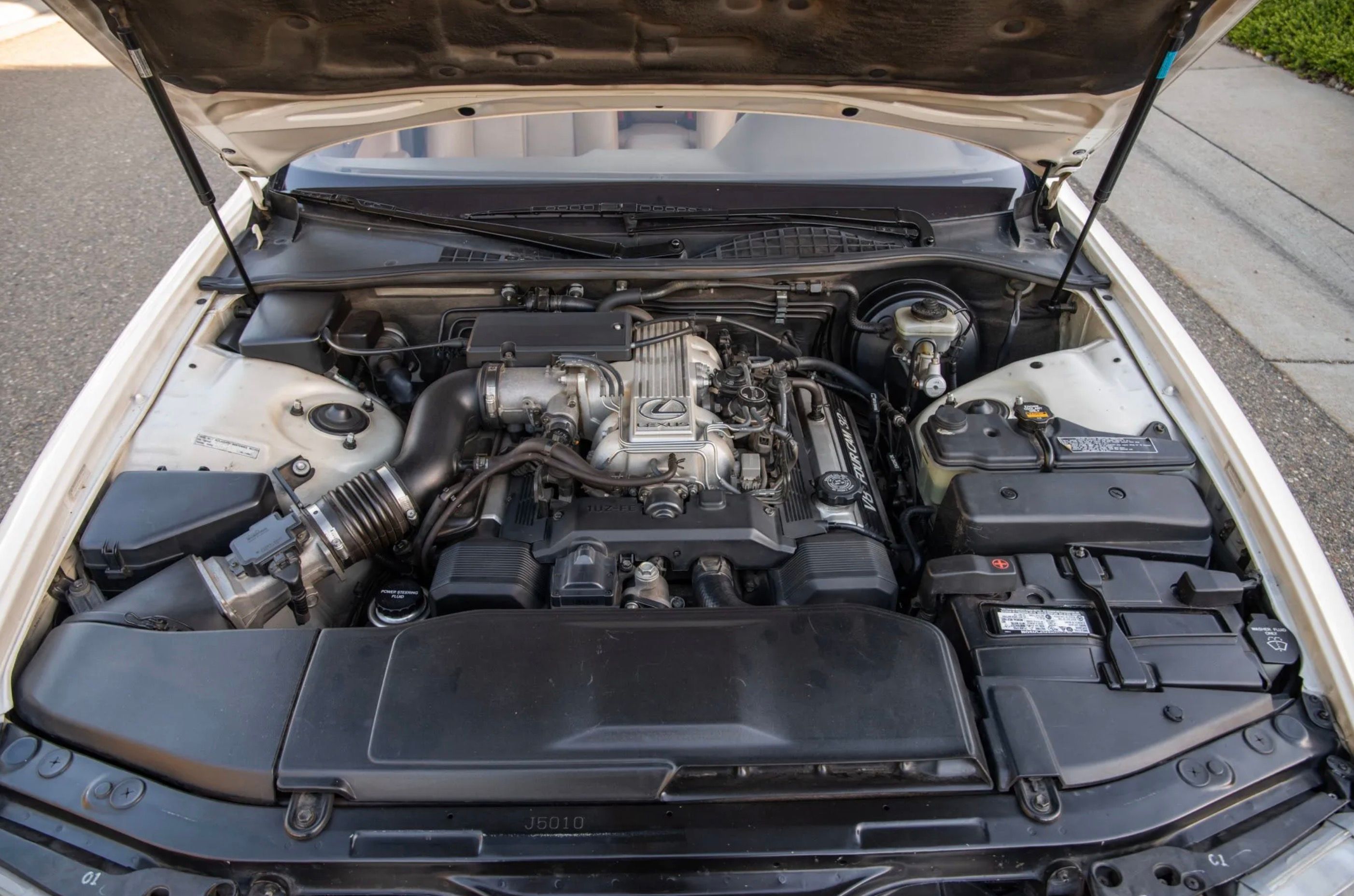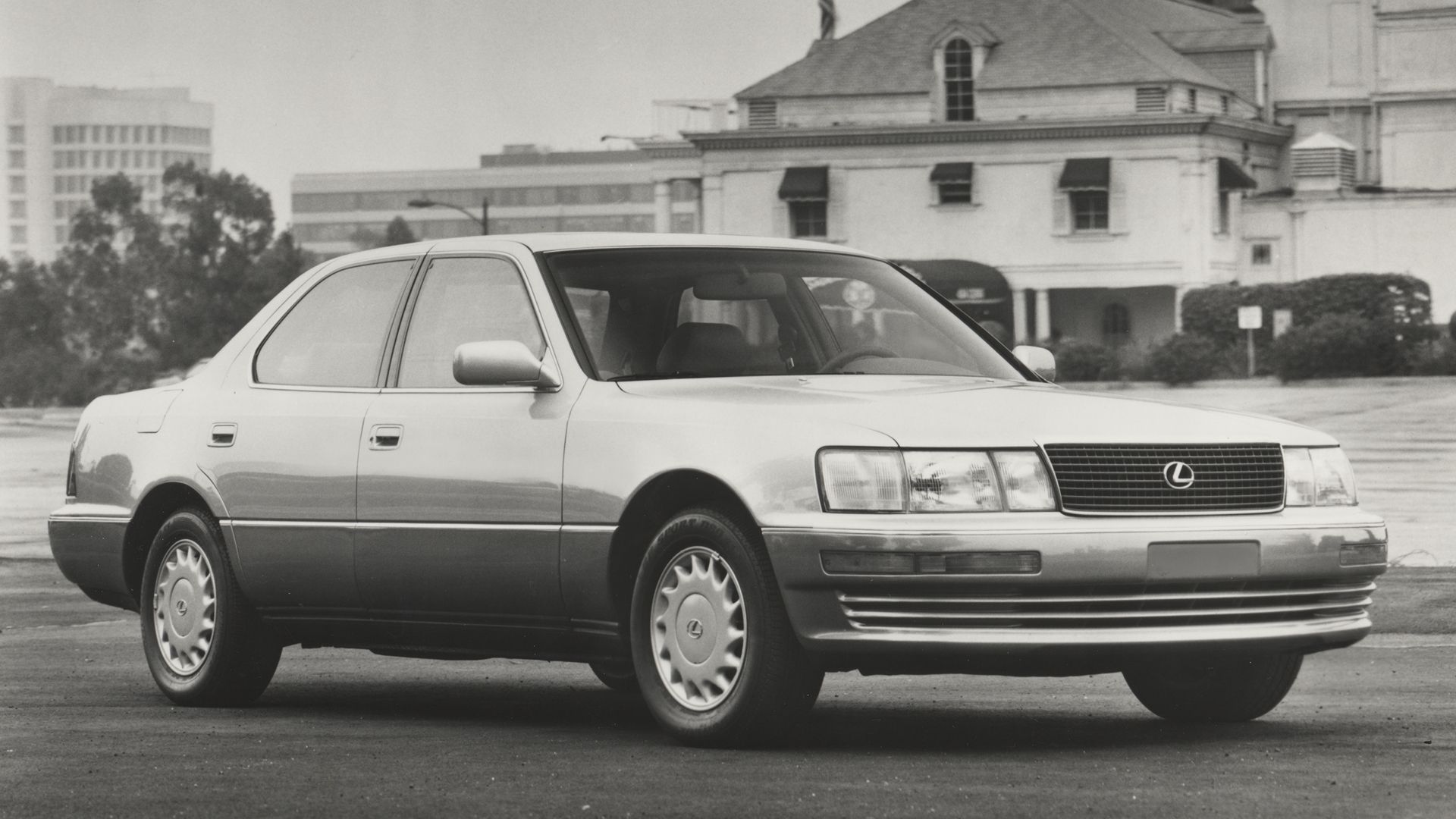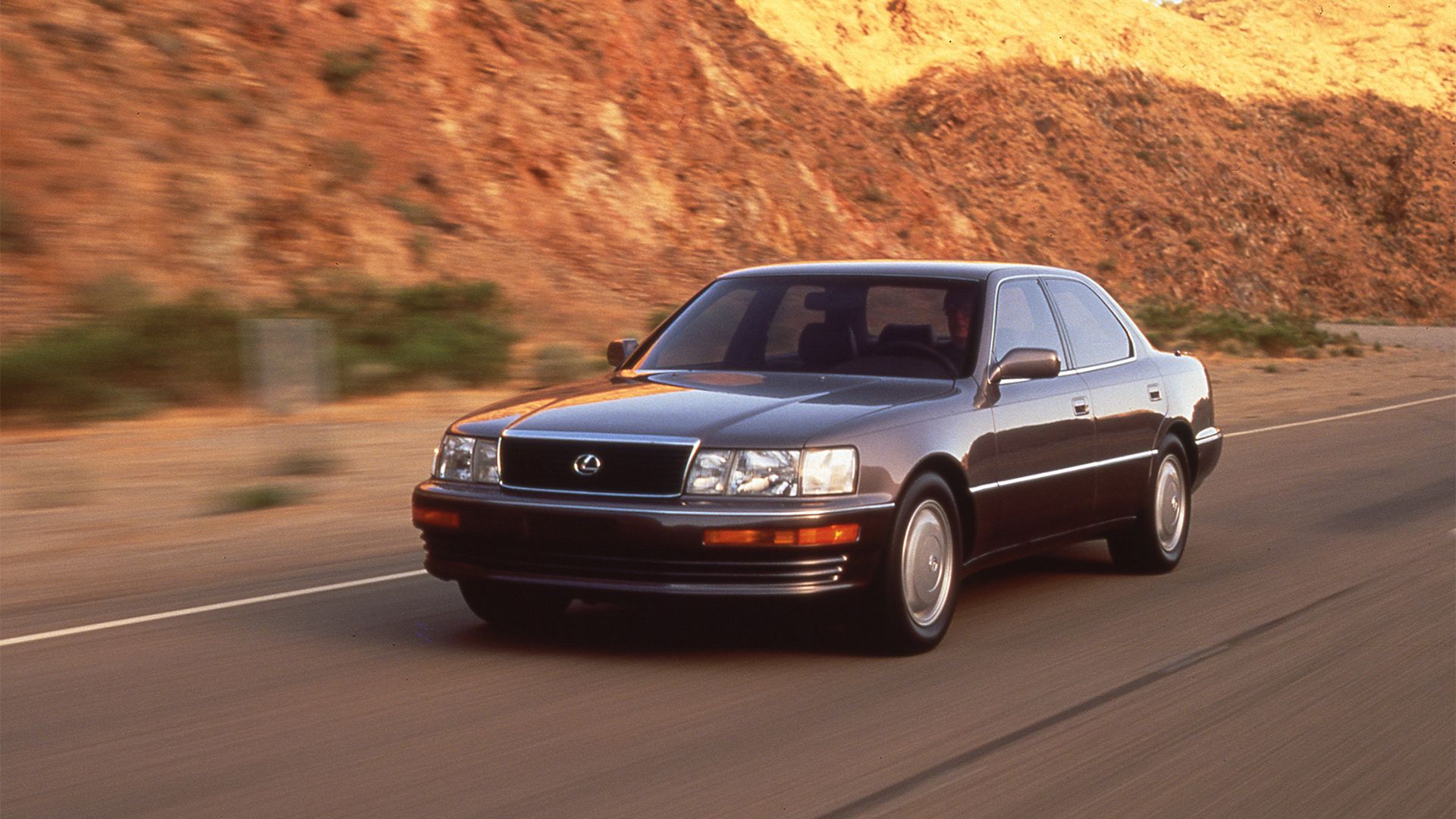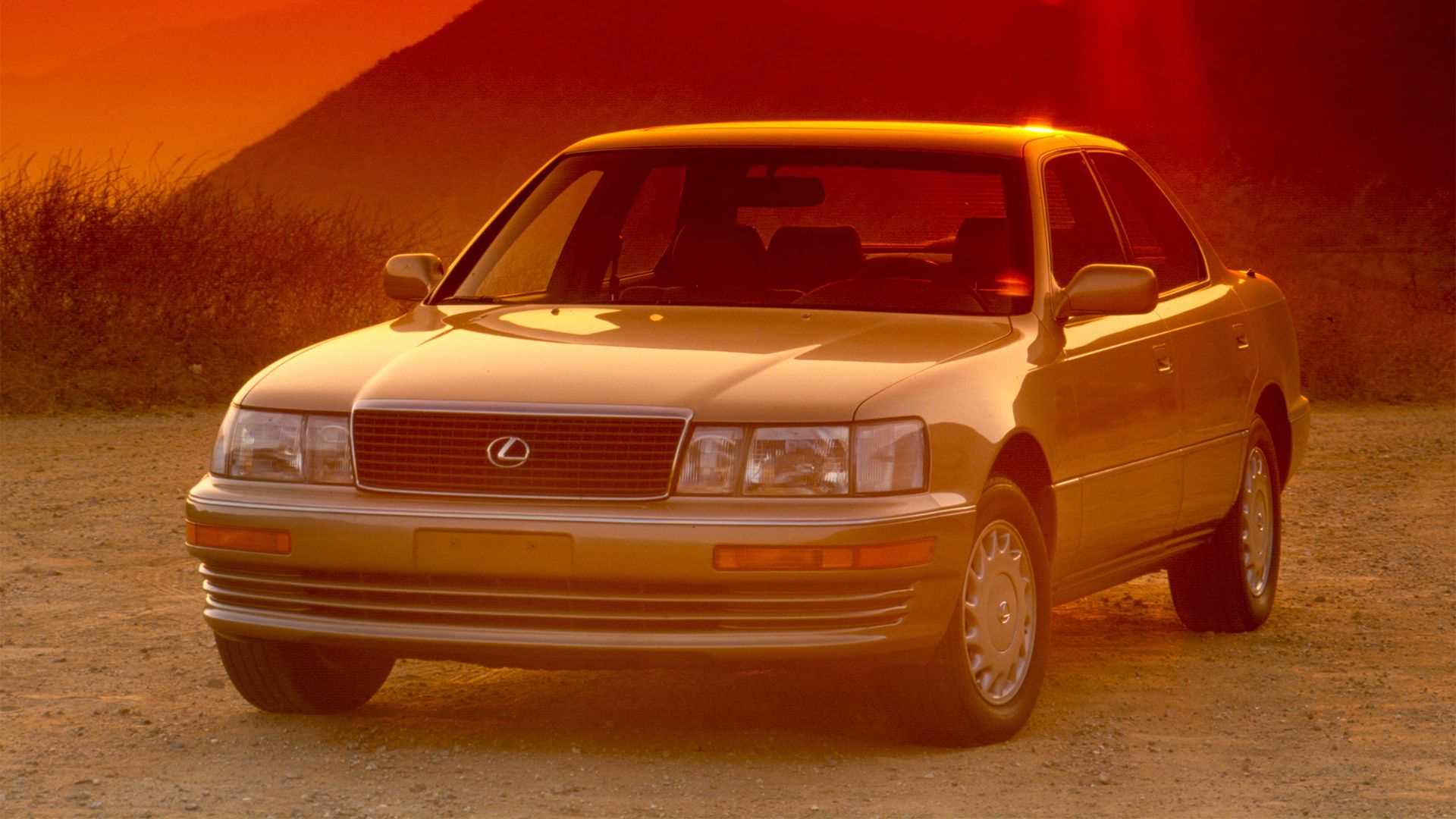It was the late 1980s, a time when technology was booming, the economy was thriving, and luxury was being redefined. Big hair was everywhere, portable electronics were definitely hip, personal computers were making their way into homes, MTV was shaping culture, and everyone from Wall Street titans to everyday consumers craved innovation and indulgence. The world was obsessed with progress, and the automotive industry was no different. This was an era of excess, where cars weren’t just transportation; they were status symbols.
In the midst of all this, Toyota, known for its reliable and practical vehicles, decided to turn the automotive world on its head by launching a luxury car brand named Lexus. The result? The Lexus LS 400—a car that wasn’t just a product of its time, but a revolutionary leap into the future. With cutting-edge engineering, obsessive attention to detail, and a design ethos that embraced the precision of Japanese craftsmanship, the LS 400 was born. It was the car that sent shockwaves through the high-end market, toppling European giants and forever altering the landscape of luxury.
Here’s why the original LS 400, even decades later, remains the gold standard and arguably the best Lexus ever built.
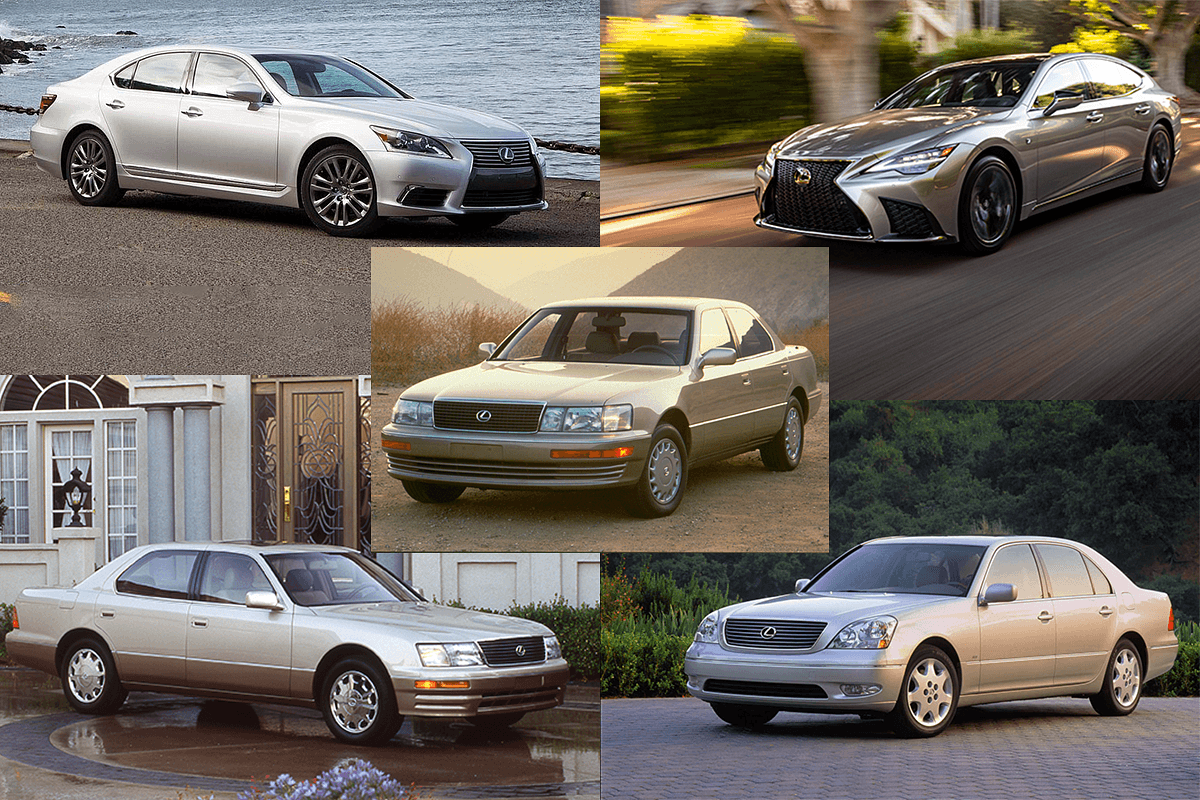
Related
Ranking Every Lexus LS Generation From Worst To Best
“LS” is short for “Luxury Sedan” – has any other car lived up to its name as consistently as this one?
All information has been sourced from Lexus and Toyota.
1 Purposeful Engineering And Design Philosophy
Every inch of the LS 400 was designed with purpose; Toyota doesn’t do “good enough.” Everything from the vehicle’s powertrain to its aerodynamic body followed the Toyota Way—Toyota’s unrelenting commitment to precision and continuous improvement. With over $1 billion invested in its development, the LS 400 was no ordinary luxury sedan. This wasn’t about following trends; it was about setting them. No element of the design was superfluous—every feature served to deliver unmatched reliability, comfort, and performance. This level of detail is what made the LS 400 one of the best Lexus models ever.
|
1990-1994 Lexus LS 400 (UCF10) |
|
|---|---|
|
Engine |
4.0-liter V8 |
|
Horsepower | Torque |
250 hp | 260 lb-ft |
|
Drivetrain |
Rear-Wheel Drive (RWD) |
|
Transmission |
4-speed automatic |
|
Fuel Economy (MPG) |
16/22/18 mpg city/highway/combined (1990 model) |
2 A Development Process Built On Innovation
Creating the LS 400 wasn’t just another project for Toyota—it was a statement of intent. More than 60 designers, 1,400 engineers, and 2,300 technicians poured their efforts into creating something truly revolutionary. The result? A sedan that wasn’t only luxurious but one that redefined engineering standards. The development team followed the Kaizen principle—continuous improvement—which is why the LS 400 wasn’t just a one-hit wonder but a vehicle that set the foundation for every Lexus model that followed.

Related
Lexus LS Generations: Everything You Need To Know In One Place
The cultured Lexus LS has provided buyers with a refined and reliable luxury alternative to the traditional full-size sedans for more than 30 years.

Add CarBuzz to your Google News feed.
3 The Original LS Set New Standards For Reliability
Toyota’s ironclad reputation for building vehicles that outlast its competition reached its zenith with the LS 400. The obsessive attention to quality control, powered by the Toyota Production System, meant the LS 400 didn’t leave the factory unless it was flawless. We’re talking about a vehicle that went through stress testing most cars would never see—everything from extreme climate testing to over 1.4 million miles of road simulations. Many original LS models are still on the road with way over 200,000 miles. Not only was it mechanically reliable, but the high-quality interior holds up beautifully.
4 Quality Control Like No Other
Craftsmanship in the LS 400 wasn’t an afterthought—it was built into the car’s DNA. Toyota could not afford to fumble the Lexus launch and implemented a rigorous inspection process, ensuring perfection. The attention to detail in the LS 400’s assembly process was unprecedented. From the perfect panel gaps to the high-quality stitching in the seats, every inch of the LS 400 reflected an obsessive level of precision. The stringent quality control was introduced at every level of production, ensuring that the LS 400 was as beautiful on the inside as it was reliable under the hood.
5 Enduring Style That Defies Trends
Luxury cars are often built to make a statement, but the LS 400 did so with subtlety and elegance. Its design wasn’t about ostentation but about sophistication. Clean lines, well-proportioned curves, and an overall understated silhouette gave the LS 400 a timeless appeal. While some of its competitors look dated today, the LS 400 still commands respect on the road. Inside, you’d find supple leather, real wood trim, and ergonomically placed controls, all contributing to an experience that felt carefully curated rather than thrown together.
6 It Was Cheaper Than Rivals From Germany
When comparing luxury vehicles, German brands like BMW and Mercedes-Benz often dominate the conversation. However, the LS 400 offered similar levels of luxury and performance at a more affordable price point of around $35,000, undercutting rivals by thousands. This affordability didn’t come at the expense of quality; instead, it provided a cost-effective alternative without compromising on the essentials that make a luxury car desirable.
7 The V8’s Perfect Blend Of Power And Smoothness
Powering the LS 400 was a robust 4.0L V8 engine that delivered 250 horsepower and 260 lb-ft of torque. This engine wasn’t just about raw power—it was about silky smooth operation and longevity. The advanced DOHC 32-valve setup, coupled with an electronic fuel injection system, made the engine virtually bulletproof. Even decades later, many LS 400s continue to roam the roads without a hiccup, proving Toyota’s commitment to making sure its luxury models were just as durable as their bread-and-butter offerings.
While many luxury cars are either plush or powerful, the LS 400 struck a perfect balance. The 4.0L V8 engine wasn’t designed just for horsepower numbers. It was built for refinement. The car glided on the highway with an unmatched level of comfort, thanks to the double-wishbone suspension at all four corners. The car’s ride was smooth without ever feeling disconnected from the road. The LS 400 demonstrated that performance and comfort were not mutually exclusive, a principle Lexus continues to uphold in the best Lexus cars of today.
8 Toyota’s Mastery Of Efficiency
At a time when large luxury sedans were known for being fuel guzzlers, the LS 400 achieved a level of efficiency that set it apart from its competitors. The 1990 LS sedan managed 16/22/18 mpg city/highway/combined. By comparison, the 1990 BMW 735i automatic (with a smaller six-cylinder engine) had figures of 14/20/16 mpg.
The LS 400’s well-engineered engine, paired with a lightweight yet rigid body and aerodynamic design contributed to this balance of power and efficiency, proving that luxury and performance could coexist with responsible fuel consumption. The Lexus LS 400 also managed to avoid the gas-guzzler tax, another sensible reason for customers to consider it.
9 Supreme Noise Insulation
In a true luxury car, noise insulation is key. Even one minor rattle or squeak can spoil the impression of quality. Cruising at 100 km/h (62 mph), the Lexus LS 400 had an interior noise level of only 58 dB, a figure aided by the car’s low drag coefficient of 0.29. At 124 mph, European tests revealed the noise level to be 74 dB, the same as a BMW 735i cruising at 93 mph. While the BMW was sportier to drive, the Lexus excelled at cruising quietly, making every trip a relaxing affair. Today, every Lexus remains at or near the top of the class for refinement; they’re some of the quietest cars on the road.
Circle F was a top-secret project, with more than 4,000 people involved in bringing it to fruition. Right from the start, the targets set for the LS were exceptional. Its top speed had to be 250 km/h, yet it would deliver 10.5 l/100 km. Its aerodynamic styling would have a drag coefficient of no more than 0.29, and when cruising at 100 km/h, the noise level in the cabin would not exceed 58 dB.
To put those figures into context, the LS would be faster, quieter, more aerodynamic and more fuel-efficient than any of its German rivals. Each goal on its own was ambitious; for them all to be achieved together seemed an impossibility.
10 The Blueprint For Future Success
The LS 400 wasn’t just a successful launch—it was a blueprint for Lexus’s entire future. Its innovative features, like its advanced sound-dampening engineering, a plush ride, and uncompromising reliability, became staples in future Lexus models. The LS 400 set the tone for what would become a long line of best Lexus cars, cementing its legacy as a luxury automaker that didn’t just compete with the best in the world but, in many ways, surpassed them.

Related
10 Facts You Should Know About Lexus
There’s so much more to celebrate than just the LFA.
Sources:
Toyota Global
,
Lexus

